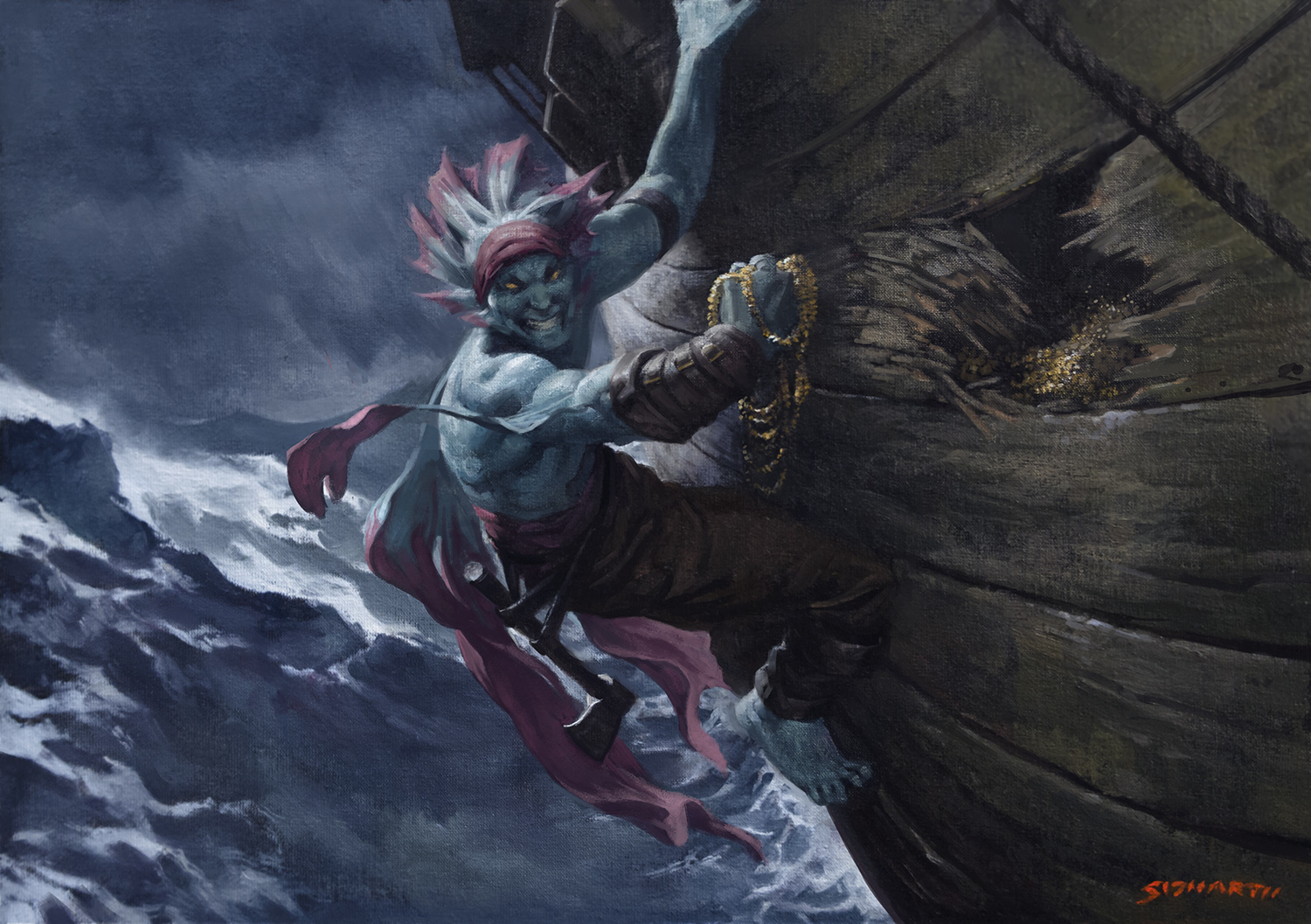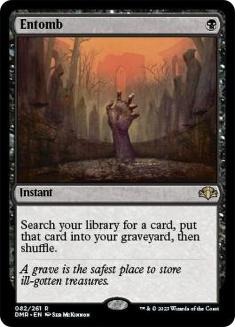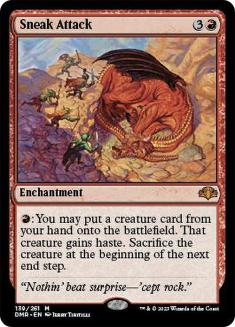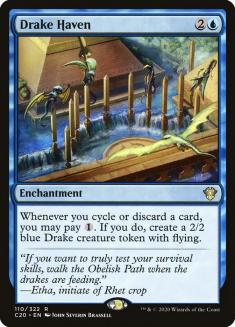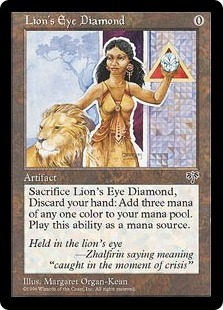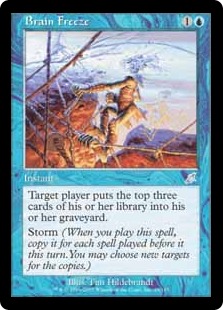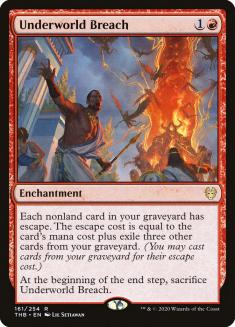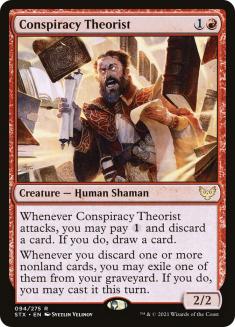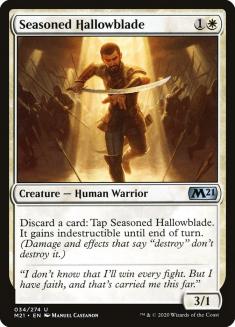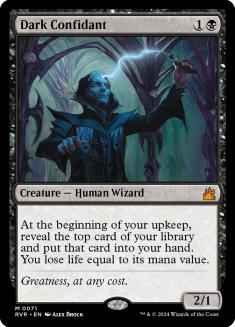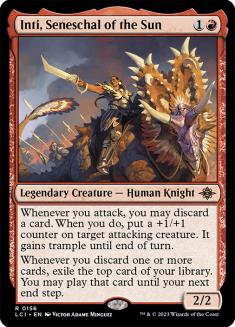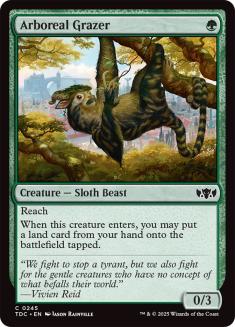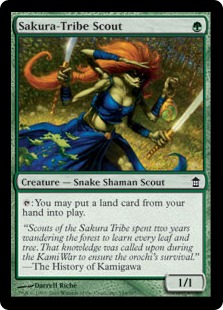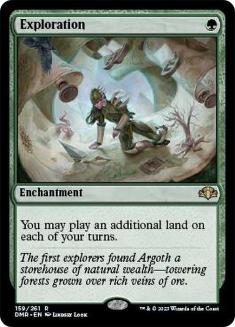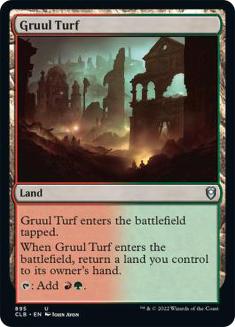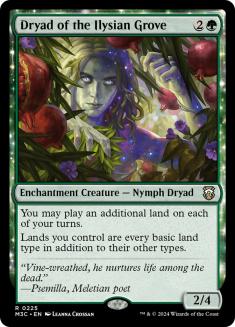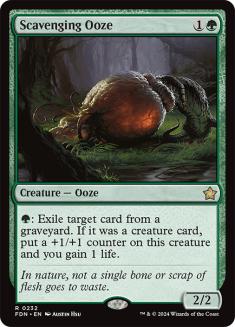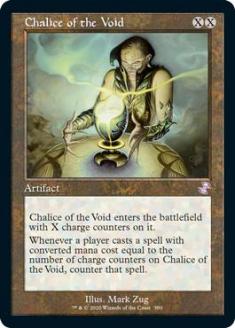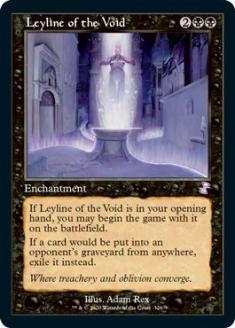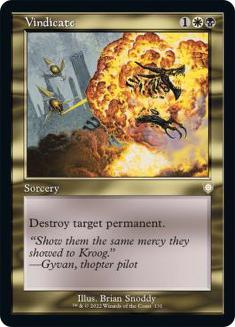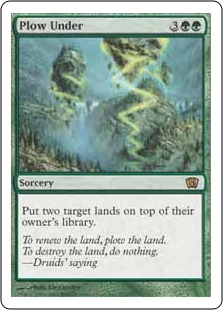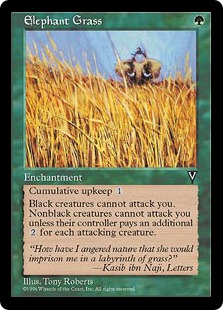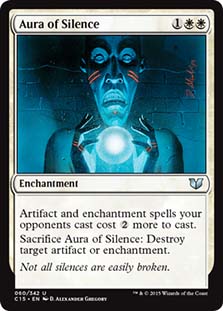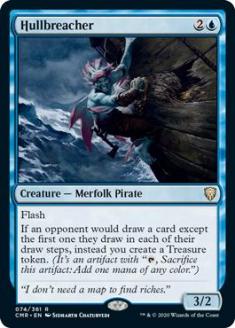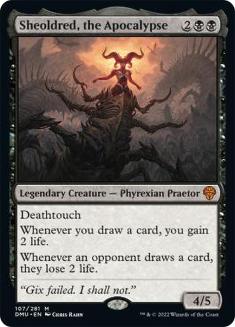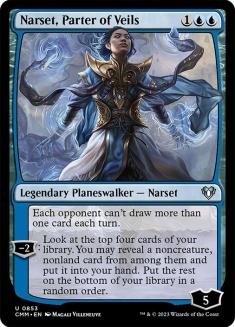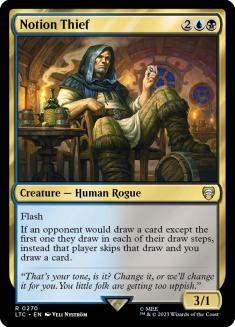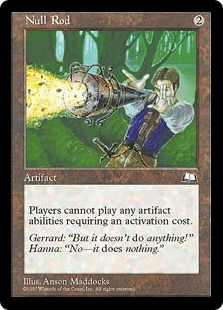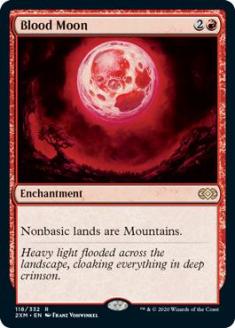Howdy, gamers! With another week of the current run of Vintage Cube on Magic Online (MTGO) to go and previews for Murders at Karlov Manor just ramping up, I get an opportunity this week to dive into something a little more personal to me, a creative aspect of Cube curation. Today I’ll break down a Cube mantra of mine that I used to mention on The 540, which is to “make the fun thing the good thing”.
The idea here is simple. Cards ultimately end up in Cubes because we like playing with them, because we believe that they’re fun, but it’s also our job on some level as Cube curators to ensure that players will enjoy playing with the decks that the cards we have included incentivize players to draft. Winning isn’t everything, but for most people who play games regularly, it absolutely counts for something. As such, if you want a card or archetype to be fun to play in your Cube in practice, it must be competitive in the environment that you’ve curated.
Today’s discussion revolves around taking something that you believe to be fun and putting in effort to make it contextually competitive, through both the cards that support the archetype you’re focusing on and the nature of the other decks and cards in your environment and how they interact. Making an archetype competitive is equal parts providing quality infrastructure to draft the deck and ensuring that the tools available to other players won’t invalidate it.
Proactive Support
Let’s start by looking at proactively supporting an archetype. I wrote an article last year about balancing archetypes for Cube that is a great starting point for today’s topic, and I’ll be repeating and digging deeper into a couple of that piece’s points today.
It’s important to understand the power level of your Cube to figure out how to introduce new archetypes into your environment. Know the approximate fundamental turn of your Cube and also hoops that you’ll need to jump through to draft a specific style of deck.
Synergy-driven decks get less appealing the more powerful the average individual card in your Cube is. There’s inherent friction between something like an Elves Typal archetype and giving players access to cards like Birds of Paradise that just have higher floors than most any Elf. This is neither an indictment of specific synergies nor of individually powerful cards, just an acknowledgment that cards with higher power floors can make drafting weaker individual cards less appealing.
Powerful cards are one way to make an archetype appealing, with the other being the volume or raw quantity of cards that fit into an archetype.
Power
The easiest way to get most players to draft a specific archetype is to make them feel like it would be foolish not to. Archetype-specific powerful cards can vary greatly in texture between Cubes, but Entomb is a great example of an incredibly powerful card that screams Reanimator. Sneak Attack threatens to close the game very quickly and puts you into a specific style of deck. For a lower-power example, I would never pass Drake Haven while I had it in my Spooky Cube because of how easy it was to just make about four Drake tokens every turn (which is also why Drake Haven is no longer in the Cube).
Going back to the Elves example, there are plenty of generically powerful Elves that you could include in a Cube to get players to start to move in on the archetype. There’s Llanowar Elves, of course, and Devoted Druid stands out among two-mana ramp spells. Rofellos, Llanowar Emissary is totally broken if you’re feeling feisty. As players pick up these cards, they’ll start to more strongly consider Elvish Archdruid, which is fine on its own but becomes a standout once you hit a critical mass of Elves. I’ll touch more on volume of support shortly, but it’s important to understand the role that powerful individual cards have in incentivizing players to start amassing that volume of cards.
Ultimately, any great archetype needs to offer great first picks that call out to drafters and (ideally) demand support. Najeela, the Blade-Blossom is an interesting case study from the current run of the MTGO Vintage Cube. The card is actually really strong if you already control some Warriors to attack with the turn that you cast it, but without specific support, it’s transparently much weaker than fan-favorite Gut, True Soul Zealot. It honestly wouldn’t take all that much to make this comparison close. Mardu Woe-Reaper is a fine enough one-drop that offers some graveyard hate, and I generally believe Zurgo Bellstriker would already be better in the Cube than Soul-Scar Mage as an individual card. Some more ones or twos, especially in red, would make a much more compelling case for drafting and playing Najeela.
The Cube has a Warriors card, that to be fair I did see do its thing once, but there’s not really a Warriors deck, and Najeela doesn’t stand out among three-mana threats. The incentives to draft Najeela over Adeline, Resplendent Cathar aren’t really there. This brings us cleanly into the topic of supporting archetypes through card volume.
Volume
Finding the right volume of support to make an archetype really work is tricky, as certain aspects of Cube Draft make things messy. Larger Cube sizes mean you won’t see all of the cards every draft, and the way packs come together can matter a lot, too. A shallowly supported archetype just won’t show up in drafts where too many of the cards just end up in the same pack, making it impossible for one player to get all of the pieces they need, a frequent problem for players who love to force Storm.
It can be difficult to know when you have enough cards, and there’s not a magic number for that, but it is sometimes easy to see when you just don’t have enough support. A good exercise when assessing the volume of support you have for a given archetype is to just pull cards from your list as if you were building a Constructed deck. Make the ideal version of the deck you’re trying to support, and then ask yourself how many of the parts are replaceable, and how much of the rest of the Cube could meaningfully serve as replacements. Some archetypes are easier to assess than others, but this exercise is tremendously useful when it comes to aggressive decks, especially typal ones. If you only have ~25 cards worth of meaningful aggressive support, then your Cube does not actually feature an aggressive deck.
I’ll repeat that there’s not a magic number of cards that you’ll want to ensure that something will show up, but the guideline that I’ve given myself is that if I want an archetype to be drafted consistently, then I will include enough cards for about two-and-a-half players to do so. If it is indeed a fun thing to do, then there’s no harm in having two players draft the deck, and there is plenty of variance as well as intentional design that will stop an archetype with this level of support from having full representation every draft even still. There are the aforementioned issues with Cube size and pack collation, but even after that, you have cards contested by other archetypes and, ideally, overlapping synergies that make it so the decks are unique from draft to draft otherwise.
The harmony between Humans and Madness as archetypes in Spooky Cube is a great illustration of offering a high volume of support to archetypes while allowing players a lot of room to maneuver. There are too many Humans and both discard outlets and payoffs for you to not be able to end up in one of these archetypes if you really try, and a good volume of cards that work in either deck as well. Cards like Conspiracy Theorist and Seasoned Hallowblade will play great in either deck while becoming increasingly more meaningful as you lean in to either strategy. And then there are cards like Dark Confidant and Inti, Seneschal of the Sun that both decks want but are also just generally high picks.
That’s actually another reason that I like a very high volume of support. When everyone at the table wants the best cards for an archetype, it can be pretty common to just see them go to other decks, while the archetype-defining cards that you had hoped would be hits go last.
Another good case study regarding volume of support in the current MTGO Vintage Cube is the Lands archetype. The most powerful cards for the archetype have all been in the Cube for a while now, but the current iteration upped the volume of support of cards that care about lands to the point that you can draft some kind of land deck at most draft tables if you really want to. Cards like Arboreal Grazer and Sakura-Tribe Scout aren’t especially strong in the Cube, which is actually a factor in their importance to ensuring that the Lands deck can consistently show up. Synergy-driven decks that run on individually weaker cards live and die on your ability to wheel cards. Fastbond is a broken card that is in range to first-pick on power level, but you might be in trouble if you can’t wheel Exploration.
Also really important for making these decks tick is that, while mana-fixing comes at a premium in most Cubes, nobody but the Lands players want the bouncelands in Vintage Cube. They enter tapped and you can just lose when they’re Strip Mined in some random midrange deck, but they’ve contributed to making Dryad of the Ilysian Grove more contextually powerful than it’s ever been in the digital Vintage Cubes. Fetchlands only become more and more contested all of the time, so having this kind of mana-fixing that nobody else wants or a way to otherwise avoid the battle for mana-fixing is massive.
This brings me to another archetype that thrives on volume that got much weaker in this iteration of the MTGO Vintage Cube. The total volume of white cards was reduced. As a result, I have seen very little Mono-White Aggro in the queues and have really only been able to draft the deck once myself. This was an intentional pivot to try to get aggressive players to draft more colors, but I do see forcing aggressive players to draft fetchlands highly as detrimental to aggressive archetypes.
Mono-White and Mono-Red gain a lot of equity both by being able to wheel cards and by not caring about the mana-fixing that many other drafters need to pick highly. Splashing some high-impact cards can increase the power level of an aggressive deck, but the more an aggressive deck becomes fully Boros, the more of a fail rate it tends to have just from its manabase. Specific lands for an archetype or incentives to not care about mana-fixing in the same way as other players is a deeply meaningful aspect of supporting archetypes by card volume.
Now let’s talk about what to avoid offering the other decks if you want your fun archetype to succeed.
Don’t Hate the Fun Thing Out
I touched on hate cards in my article on archetype balance, but today I’d like to dive further into this concept. In that article, I used Circle of Protection: Red as an example of a card to avoid, but I think that there’s a lot more nuance to this conversation, and a lot of cards that are less egregious than COP: Red are over the line.
Once again referencing Spooky Cube, a core tenet of that environment is that playing out of the graveyard is fun. I don’t want whoever has a more stocked graveyard to just win every time, so I do value having some cards that can exile cards from graveyards, but I tend to limit this to cards that only exile a single card a turn. A player might pick Rest in Peace highly if it were in the Cube, but any game won by Rest in Peace would essentially amount to me tricking the losing player into trying something that looked fun and mocking them for taking the bait. A card like Scavenging Ooze is technically less egregious for being a creature and therefor easier to interact with, but it simply does too much harm to the fun graveyard archetypes when it gets to stick around.
Similarly, I avoided expressly hateful cards in the curation of my Artifact Twobert. What would be the most powerful Gruul card for a Cube that is chock-full of Artifacts? Ancient Grudge. What card would spit in the face of a player who thought they were going to have a lot of fun casting fiddly artifacts? Ancient Grudge.
I also mentioned Wrath of God in my article on archetype balance as a hate card in an environment where the creature decks just aren’t fast enough to contest that sort of effect, and I imagine it’s not surprising to know that I have a distaste for Shatterstorm and cards like Akroma’s Vengeance in Cubes that invite players to draft artifact decks.
My philosophy around these sorts of cards is in many ways informed by the popularity of the Modern format and just generally formats where many different archetypes are viable. As formats get wider, it becomes more difficult to hate anything specific out, and you have to play interaction that’s inherently more generic to stay competitive with the field. It seems clear to me that part of what players like about wide formats is that they’re less likely to run into the cards that fully invalidate what they’re trying to do! I know that my enjoyment of Modern is lower the more likely that I am to play against Chalice of the Void.
Hate cards as a sort of safety valve serve an important purpose in Constructed and even in retail Limited to try to prevent any one strategy from being dominant, but the nature of Cube makes that kind of reactive safety valve less important. It’s good to have a card like Leyline of the Void in Constructed to keep graveyard decks from being dominant, but that’s largely because the card pool is slow to change. You have to wait for new sets for new tools, and removing cards from formats is even more difficult. You can just change your Cube between drafts if there are problems. Hell, you can change your Cube between or even during games if your players don’t mind!
Of course, there are plenty of Chalice of the Void and Blood Moon fans out there who get their kicks from stopping the opponent from playing at all, and I think there is some room for this in Cube. I just prefer not to do it with those specific cards. I consider the ability to Stone Rain the opponent with Vindicate or really stunt their mana with Plow Under a feature in PG Cube. Interaction, up to and including some way to stop the opponent from playing the game, can be fun in small doses. It’s just way less fun when that’s all that your deck does or when one card fully shuts the opponent’s deck off.
I’ve experimented a bit with Enchantress in Cube, and there are some really great individual cards regarding that archetype that highlight my sentiments on hate cards in Cube. I think that it’s easy to understand why Back to Nature is a miserable Cube card, but I do see it as essential to have some good answers to enchantments in a Cube that is heavy on the card type. I love Seal of Primordium and Seal of Cleansing in a Cube with an Enchantress theme because they play well both in and against enchantment decks. There are some cards in similar spaces that are tempting that I personally avoid, though.
One of the more egregious cards that I’ve considered for Cube inclusion is Elephant Grass. It’s a one-mana enchantment, which is obviously what you want in your Enchantress deck; it doesn’t fully stop most opponents from playing the game; and it technically has a limited lifespan with cumulative upkeep. It’s simply too rancid in practice, especially if your opponent is trying to attack with black creatures. Even if there’s a good volume of answers in the Cube, Elephant Grass will be the equivalent of multiple Time Walks some of the time, and that’s really not acceptable outside of extremely high-power Cubes.
Aura of Silence offers another example of a card that I would never feature in a Cube despite its similarities to Seal of Cleansing. It’s just too miserable to pay two extra mana on your spells, and when the card is good against you, it will often be a losing proposition to Naturalize it, given that the controller can sacrifice it in response to destroy an artifact or enchantment already on the battlefield. It has too much potential to Time Walk multiple times while also being a solid one-for-one when needed and a two-for-one in other spots. It probably goes without saying that I’m similarly cold on Collector Ouphe and most any other prison card. I find that games are the most fun when both players’ cards work, and when interaction is modest, though a high ceiling can be acceptable with a low enough floor.
The last card that I want to touch on today is Hullbreacher, because I feel like my position on the card in Vintage Cube is misunderstood by some and because this is my platform. Somebody asked me recently if Hullbreacher is really so much stronger than Sheoldred, the Apocalypse, and the short answer is yes, it is dramatically more powerful than Sheoldred, but more importantly, the comparison doesn’t work because they’re not the same category of card. Hullbreacher is a prison card and Sheoldred is merely a strong threat.
It’s closer to compare Hullbreacher to Narset, Parter of Veils. Both cards actually prevent the opponent from drawing extra cards, though even there Hullbreacher won’t allow the opponent to even draw one card on their own turn. It makes sense to consider these three cards in similar space if your position is that they’re fun to pair with Wheel of Fortune, but much more than the other two, Hullbreacher makes the prospect of an opponent casting their own Wheel of Fortune much less fun by having flash. You could point to Notion Thief as a mostly acceptable card that is similar, but costing less mana and being mono-blue obviously matter.
But the point of this discussion isn’t to drag Hullbreacher as often as possible; it’s because I think that there are more meaningful comparisons to other cards that aren’t in the Cube to draw than between the admittedly slightly similar cards that are in the Cube. Hullbreacher is closer to putting Chalice of the Void or Blood Moon in the Vintage Cube than it is to being just another Sheoldred. Those cards wouldn’t be oppressive, and they’re just individual cards, but they sure aren’t fun to play against when they’re good! I would actually say that the closest reference point to Hullbreacher and how I think about its inclusion in Vintage Cube is Null Rod.
There are a lot of really busted artifacts in Vintage Cube, and it makes sense to include answers to them. Cards like Loran of the Third Path are real draws to white, and we all understand what Nature’s Claim is doing in the list. So why not Null Rod or Collector Ouphe to give players without Moxen more of a fighting chance? They’re powerful cards, aren’t they? It’s because they make the games suck! It’s because Grim Monolith is fun! Why not Hullbreacher? Because casting Ponder against open blue mana should be fun and doesn’t need punishing.
Regardless of your desired power level or Cube size and regardless of how much you might love a good Blood Mooning, I hope today’s article offered some useful insight on how to invite players to draft fun cards and archetypes and to foster their ability to do so successfully. There is of course room for disagreement here and your lines might be different from mine, but specific cards that I believe work well, as well as cards that I dislike, are important for the purpose of this discussion. Until next week, gamers!

